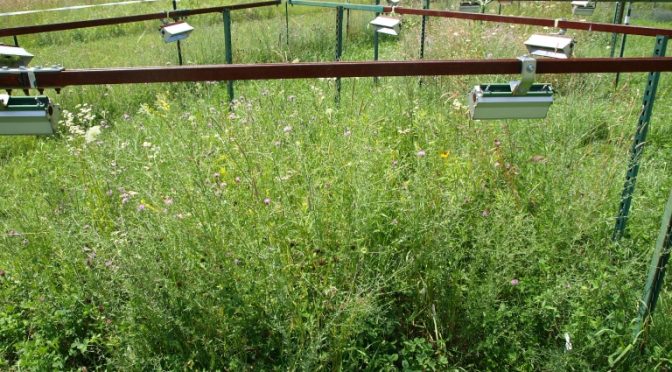Category: Native Plants
-

Invasive Shrubs Have Leaves For Longer Period Giving Them Competitive Edge
With the help of citizen scientists spread over more than 150 sites in more than 20 states, researchers collected thousands of observations over four years of exactly when both invasive and native shrubs leaf out in the spring and lose their leaves in the fall. The study area was expansive, stretching from southern Maine to…
-

When A Tree Falls (In A Tropical Forest) And Researchers Are There
Treefalls happen all the time, but this one just happened to occur in the exact spot where a decades-long ecological study was in progress, (Click on title for full story.)
-

Climate Change Favors Non-Native Plants
The findings suggest important differences in how native and non-native plant species’ respond to climate change. Because other studies have shown that species which failed to shift their flowering times over the past century were more likely to decline in abundance or go extinct, native species may be more susceptible to climate change than non-natives…
-

Are Native Plant Nurseries Introducing New Superbugs Into Ecological Restoration Sites?
While ecologists have long been wary of exotic plant pathogens borne on imported ornamental plants, this was the first time in California that these microorganisms had been found in native plants used in restoration efforts. Their presence in restoration sites raised the frightening possibility that ecological restoration, rather than returning disturbed sites to their natural…
-

Is Your Native Plant Really What It Claims To Be?
The analysis revealed that 54 percent of the purchased plants labeled “American bittersweet” and/or “Celastrus scandens” were in fact oriental bittersweet. Seven of the 11 vendors tested were selling mislabeled plants. Four of these were located in Illinois, where it is illegal to sell oriental bittersweet. (Click on title for full story.)
-

Deer Alter Forest By Avoiding Bad-Tasting Invasive Plants
When rampant white-tailed deer graze in forests, they prefer to eat native plants over certain unpalatable invasive plants, such as garlic mustard and Japanese stiltgrass. These eating habits lower native plant diversity and abundance, while increasing the proportion of plant communities made up of non-native species, according to a new study. (Click on title for…
-
Removing Exotic Plants From Natural Landscapes Benefits Native Wildlife
“Our results show that vegetation restoration can improve pollination, suggesting that the degradation of ecosystem functions is at least partially reversible. ” (Click on title for full story.)
-
Good Intentions Gone Bad: Pollinator Seed Mixes Spread Invasive Weeds
We don’t have any issues at all with the concept behind the pollinator habitat program; it’s a good program. But as a result of this program, we’ve now introduced Palmer amaranth to potentially thousands of acres of land, and we need to know what we are going to be allowed to do to try to…
-

What Makes A Plant “Native” And Who Gets To Say?
For years, scientists have predicted that natives planted well north of their historic geographic limits inevitably would not only survive, but thrive and naturalize outside of horticulture in habitat made increasingly hospitable by global warming. (Click on title for full story.)
-
“Natural” Ecosystems Man-Made Centuries Ago
While I was doing field work in Southern Appalachia, I noticed that whenever I saw a honey locust, I could throw a rock and hit a Cherokee archeological site. I knew that, in the late Pleistocene era, the main source of dispersal for honey locusts was megafauna such as mastodons. But mastodons disappeared more than…
